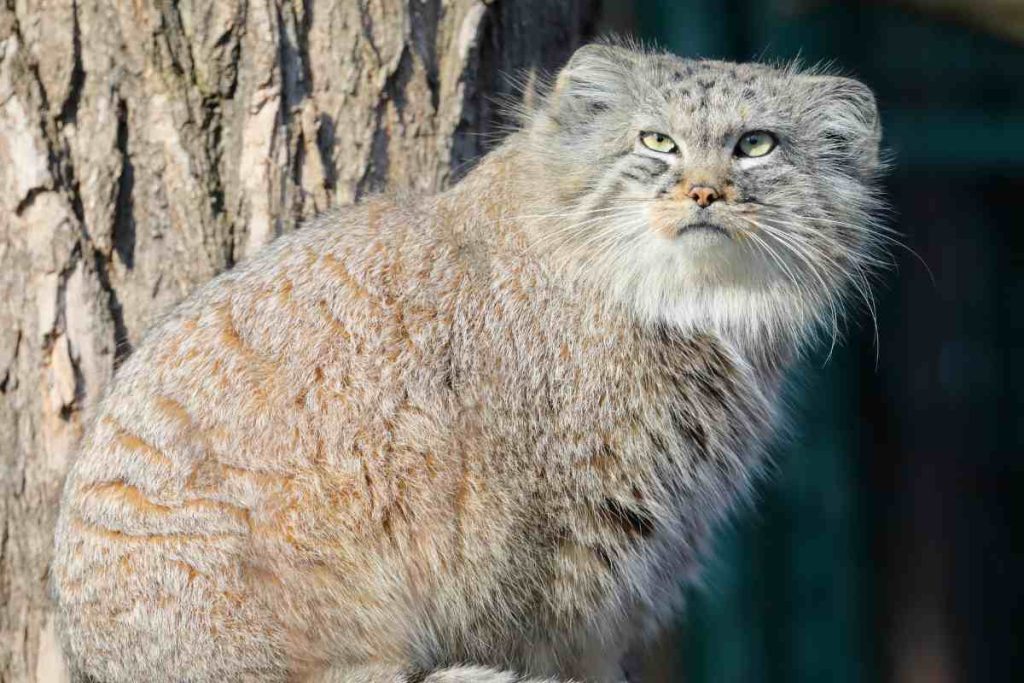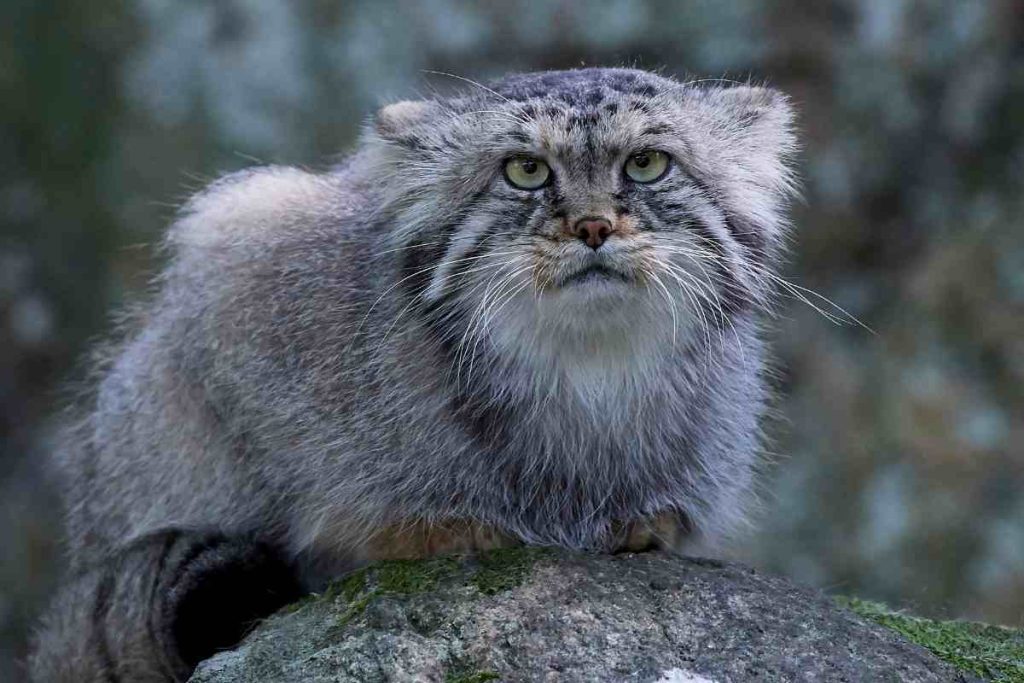The Pallas’s Cat, also known as the Manul, is a small wild cat species native to Central Asia’s grasslands and montane steppes. It is named after the German naturalist Peter Simon Pallas, who first described the species in 1776.
The Pallas’s Cat is known for its unique physical features and remarkable ability to blend in with its surroundings, making it the ultimate master of disguise.
Unique Physical Features: Unraveling the Secrets of Pallas’s Cat’s Camouflage
The Pallas’s Cat has several physical features that aid in its camouflage. Its fur is long and dense, providing insulation in the cold climates where it resides. The fur color varies depending on the region, ranging from pale gray to reddish-brown. This variation allows the cat to blend with its environment, whether rocky terrain or grassy plains.
In addition to its fur color, the Pallas’s Cat’s texture also helps it camouflage. The fur is coarse and stands on end, giving the cat a fluffy appearance. This texture helps break up its outline and makes it harder for predators or prey to spot it. The cat’s round face and short ears also contribute to its camouflage, as they resemble rocks or tufts of grass.
Blending In: How Pallas’s Cat’s Fur Patterns Help Them Hide in Their Environment

Pallas’s Cats have a variety of fur patterns that help them hide in different habitats. In rocky areas, their fur has a mottled pattern that resembles the color and texture of rocks, allowing them to blend in seamlessly with their surroundings and remain undetected by predators or prey.
In grassy plains, Pallas’s Cats have a striped pattern on their fur that mimics the tall grasses. This pattern helps them disappear into the landscape, making it difficult for predators or prey to spot them. The stripes also break up their outline, making it harder for other animals to distinguish them from the surrounding vegetation.
The Art of Stealth: Pallas’s Cat’s Silent Movements and Hunting Techniques
Pallas’s Cats are known for their stealthy movements and hunting techniques. They are incredibly agile and can move silently through their environment, making it easier for them to sneak up on their prey. Their long hind legs and short front legs give them a low profile, allowing them to move close to the ground without being noticed.
Pallas’s Cats rely on their excellent eyesight and hearing to locate their prey when hunting. They have large, round eyes adapted for low light conditions, allowing them to see even in dimly lit environments. They also have tufts of fur on their ears that help enhance their hearing, enabling them to detect the slightest movement.
Adapting to the Elements: How Pallas’s Cat Survives in Extreme Environments
Pallas’s Cats are found in some of the harshest environments on Earth, including the high-altitude steppes of Mongolia and the frigid mountains of Siberia. To survive in these extreme conditions, they have developed several adaptations.
One of their most notable adaptations is their thick fur, which provides insulation against cold temperatures. Their fur is so dense that it can protect them from freezing winds and snowstorms. Pallas’s Cats also have a stocky build and short legs, which help conserve body heat and reduce heat loss.
Masters of Stillness: Pallas’s Cat’s Ability to Remain Motionless for Extended Periods

One of the most fascinating behaviors of Pallas’s Cats is their ability to remain motionless for extended periods. This behavior is known as “cryptic behavior” and is a form of camouflage. By staying still, the cat can blend in with its surroundings and avoid detection by predators or prey.
This behavior is advantageous when hunting. Pallas’s Cats will patiently wait for their prey to come within striking distance, remaining completely motionless until the perfect moment to pounce. This allows them to conserve energy and increase their chances of a successful hunt.
The Power of Expression: Decoding Pallas’s Cat’s Facial Features and Body Language
Pallas’s Cats have unique facial features and body language that they use for communication and survival. Their facial expressions can convey various emotions, from curiosity to aggression. For example, when threatened, they will flatten their ears against their heads and bare their teeth as a warning signal.
Their body language is also essential for communication. When feeling threatened or defensive, Pallas’s Cats arch their backs and raise their fur to appear larger and more intimidating. They may also hiss or growl to ward off potential threats.
Elusive Lifestyle: Pallas’s Cat’s Solitary Nature and Elusive Behavior
Pallas’s Cats are solitary animals who prefer to live alone rather than in groups. They have large home ranges that they mark with scent markings to deter other cats from entering their territory. They are highly elusive and avoid human contact whenever possible.
This elusive behavior is likely a survival strategy, as it helps them avoid potential threats and conserve energy. By staying hidden and avoiding confrontation, Pallas’s Cats can increase their chances of survival in the wild.
The Threat of Extinction: Conservation Efforts for Pallas’s Cat’s Survival

Unfortunately, Pallas’s Cats are facing numerous threats that are putting their survival at risk. Habitat loss due to human activities, such as mining and agriculture, is one of the biggest threats to their population. Climate change is also impacting their habitat, as it is causing shifts in vegetation patterns and altering the availability of prey.
Conservation efforts are being made to protect and preserve Pallas’s Cats. These efforts include establishing protected areas, implementing anti-poaching measures, and raising awareness about the importance of conserving this species. By working together, we can ensure the long-term survival of the Pallas’s Cat in the wild.
Unraveling the Mysteries: Ongoing Research and Discoveries about Pallas’s Cat’s Adaptations
Scientists and researchers are continually studying Pallas’s Cats to unravel the mysteries of their adaptations. Ongoing research is focused on understanding their behavior, reproductive biology, and genetic diversity. This research is crucial for developing effective conservation strategies and ensuring the long-term survival of this elusive species.
In recent years, discoveries have been made about the Pallas’s Cat’s adaptations. For example, researchers have found that their thick fur provides insulation and helps protect them from predators. The texture of their fur makes it difficult for predators to get a good grip on them, increasing their chances of escape.
Conclusion: The Pallas’s Cat’s remarkable ability to blend in with its surroundings and unique adaptations make it a fascinating and mysterious creature. By studying and conserving this species, we can continue to unravel the secrets of its survival and ensure its long-term existence in the wild. Through conservation efforts and ongoing research, we can protect this elusive cat and preserve its place in the natural world.
More Sources: The Mystery Surrounding Moon Bears

Leave a Reply